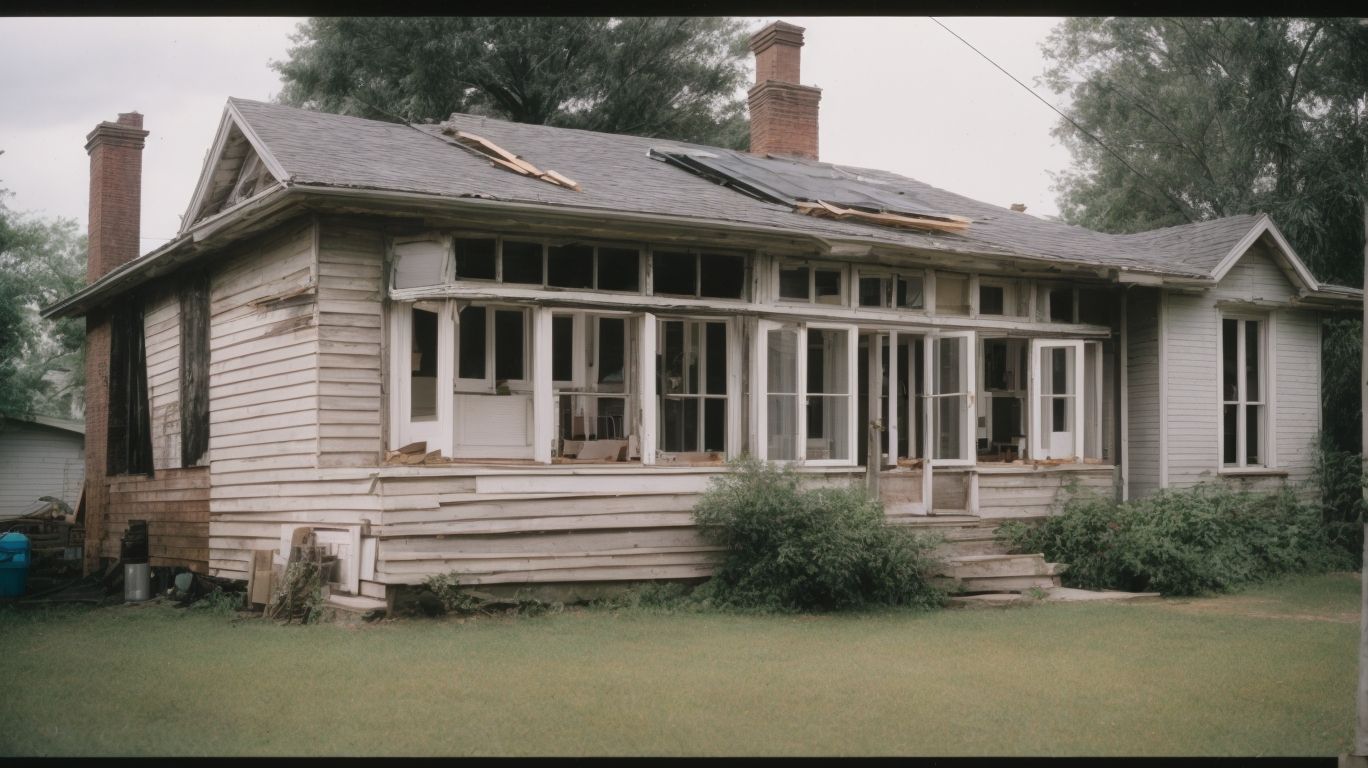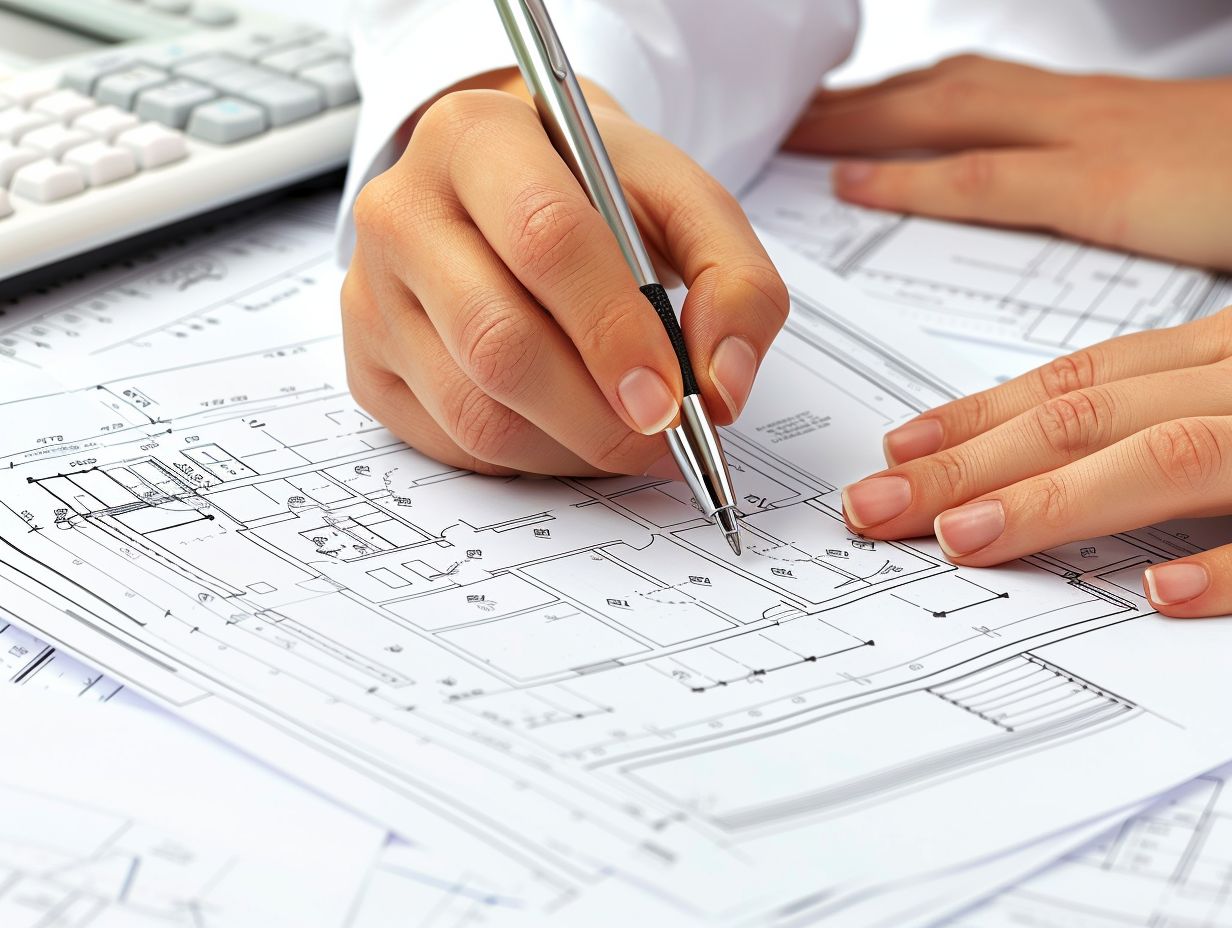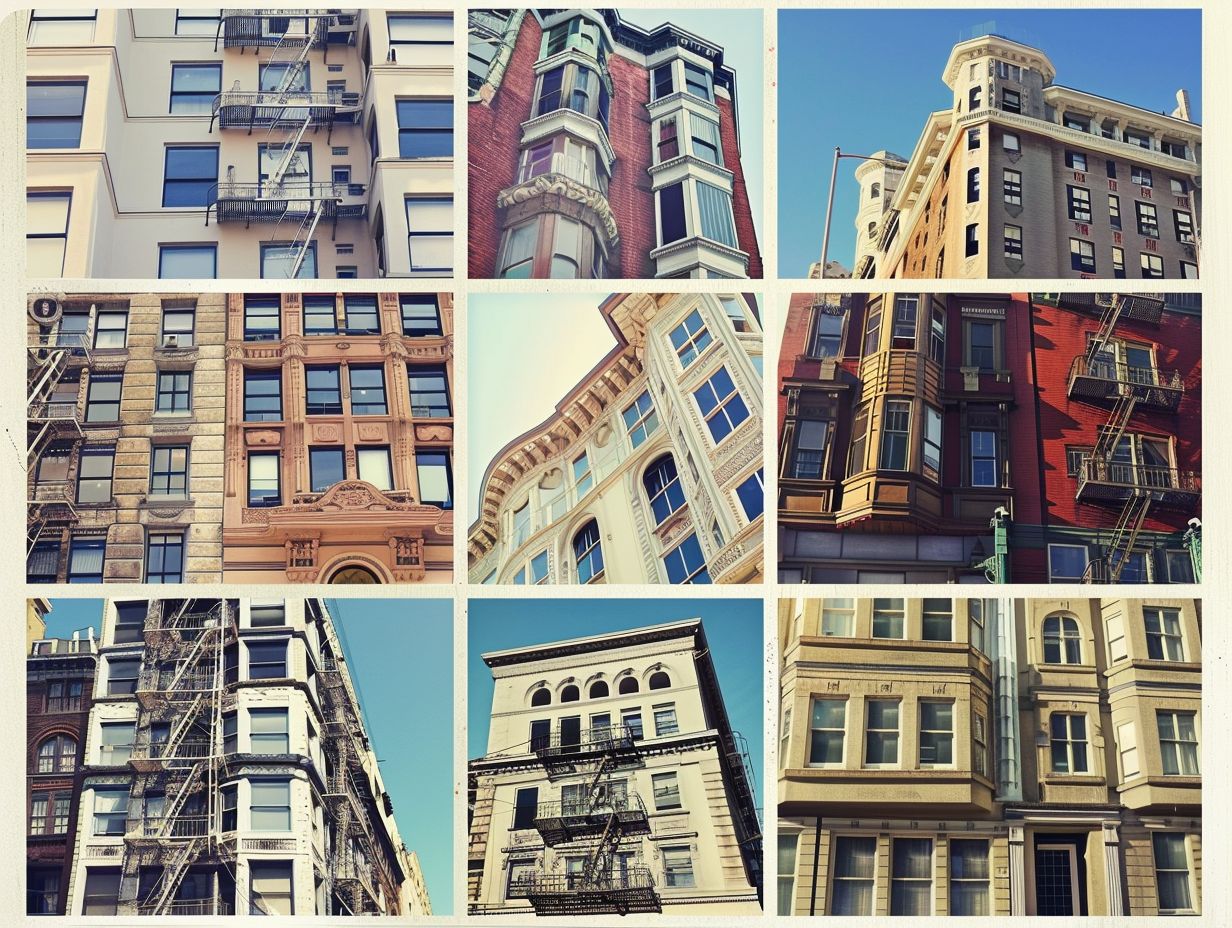
Modernizing Older Homes: A Structural Engineering Viewpoint
Modernizing older homes is a crucial aspect of maintaining and enhancing the value and safety of these properties. In this article, we will explore the importance of modernizing older homes from a structural engineering viewpoint. We will delve into the benefits of such modernization efforts, highlighting common structural issues found in older homes, such as foundation problems, structural instability, outdated electrical and plumbing systems, roof damage, and mold and water damage.
We will examine how structural engineering can play a pivotal role in modernizing older homes, including the processes of inspection and assessment, structural repairs and reinforcement, upgrading electrical and plumbing systems, roof replacement and repair, as well as mold and water damage remediation. We will discuss the cost considerations associated with modernizing older homes and provide insights on how to find a reliable structural engineer for these crucial endeavors. Join us as we uncover the essential aspects of modernizing older homes and the role of structural engineering in ensuring their longevity and functionality.
What Is Modernizing Older Homes?
Modernizing older homes involves the process of renovating, retrofitting, and upgrading existing residential properties to align with contemporary standards and requirements.
This may include updating outdated electrical systems, plumbing, and insulation to improve energy efficiency and safety. Modernizing older homes often entails modifying the layout to create open-plan living spaces, integrating smart home technology, and enhancing curb appeal with new windows, doors, and exterior finishes.
Renovations can also focus on revitalizing kitchens and bathrooms, introducing eco-friendly materials, and embracing sustainable design principles. Ultimately, the goal is to seamlessly blend the charm of older homes with the functionality and comforts of modern living.
Why Is It Important To Modernize Older Homes?
Modernizing older homes is crucial to ensure structural integrity, enhance energy efficiency, comply with updated building codes, and meet modern safety standards.
It is essential to keep up with the advancements in construction techniques and materials to reinforce the structural stability of older homes. By incorporating modern insulation, windows, and HVAC systems, homeowners can significantly reduce their energy consumption and costs. Updating older homes to meet current building codes and safety standards enhances the overall livability and peace of mind for occupants, ensuring a safer and more comfortable living environment.
What Are The Benefits Of Modernizing Older Homes?
Modernizing older homes offers numerous benefits, including enhanced sustainability, improved home improvement, and preservation of architectural elements that contribute to the property’s historical significance.
This process not only helps in reducing the environmental footprint of the house but also leads to cost savings by utilizing energy-efficient upgrades. Modernizing older homes allows homeowners to incorporate contemporary amenities while maintaining the charm and character of the original structure. It also adds value to the property and provides a unique opportunity to blend the old with the new, creating a harmonious living space that reflects both tradition and innovation.
What Are The Common Structural Issues In Older Homes?
Older homes often exhibit common structural issues such as foundation problems, deteriorating load-bearing walls, and the need for seismic retrofitting, necessitating the expertise of structural engineering and foundation repair specialists.
These structural issues can be attributed to the aging process of the home and may pose significant risks if not addressed properly. Structural engineering plays a crucial role in assessing the stability of the existing framework and designing appropriate solutions. Foundation repair specialists are essential in addressing foundation settlement, cracks, and weaknesses.
Seismic retrofitting becomes imperative to enhance the home’s resistance to earthquake forces, ensuring overall safety and structural integrity.
Foundation Problems
Foundation problems in older homes often stem from structural deficiencies, requiring thorough assessment and potential interventions using modern construction materials to ensure long-term stability and integrity.
These issues may arise due to factors such as soil movement, inadequate drainage, or the deterioration of traditional building materials. Utilizing modern materials like steel or reinforced concrete can provide superior strength and resilience, mitigating the effects of aging on the foundation. Implementing advanced construction techniques, such as underpinning or helical piers, can effectively address underlying issues and restore the structural soundness of older homes.
Structural Instability
Structural instability in older homes poses significant risks, necessitating comprehensive renovation efforts to address safety standards and reinforce the overall stability of the property.
This challenge often arises due to the natural aging process of the building materials, such as wood, concrete, and masonry. Addressing these issues requires a thorough understanding of the structural integrity of the house and the potential risks associated with continued deterioration.
Renovation projects may involve reinforcing foundation walls, replacing damaged support beams, and installing additional bracing to enhance the overall resilience of the structure. Adhering to safety standards, building codes, and obtaining necessary permits are essential considerations during the renovation process to ensure the long-term stability and safety of the older home.
Outdated Electrical and Plumbing Systems
Outdated electrical and plumbing systems in older homes often require extensive upgrades to enhance energy efficiency, reliability, and compliance with modern standards and regulations.
This becomes crucial as obsolete wiring and pipes not only pose safety risks but also lead to higher energy consumption and utility bills. Upgrading these systems can result in significant cost savings and a reduced environmental impact. Modernizing electrical and plumbing infrastructure can increase the resale value of older homes, making them more attractive to potential buyers. These upgrades can also provide better water pressure, efficient water heating, and improved electrical capacity, meeting the needs of contemporary lifestyles.
Roof Damage
Roof damage in older homes demands diligent repair and renovation efforts to ensure structural integrity, weather resistance, and long-term protection against environmental elements.
This is especially crucial as older homes are more susceptible to issues such as weakened roofing materials, leaks, and compromised insulation. These issues can lead to further damage within the home, impacting not only the structural integrity but also the safety and comfort of its inhabitants.
Timely repair and renovation of roofs in older homes are essential to prevent costly repairs and to maintain the overall value of the property. Investing in the maintenance of the roof can extend the lifespan of the home and mitigate potential risks associated with weather-related damage or structural issues.
Mold and Water Damage
Mold and water damage issues in older homes necessitate comprehensive renovation measures to address safety standards and mitigate potential health hazards associated with damp environments.
These challenges often stem from aging infrastructure, inadequate ventilation, and outdated plumbing systems. Renovation requirements include:
- Thorough inspection
- Removal of affected materials
- Proper ventilation installation
- Moisture control solutions
Adherence to safety standards during renovation is crucial to prevent further mold growth and ensure the well-being of occupants.
Professional assessment and remediation are essential to address mold and water damage effectively, taking into account the specific needs of older homes and complying with industry regulations.
How Can Structural Engineering Help In Modernizing Older Homes?
Structural engineering plays a pivotal role in modernizing older homes by facilitating thorough inspection, implementing necessary structural repairs, and ensuring the integrity of renovation and retrofitting endeavors.
This expertise is crucial for evaluating the existing structure’s safety and stability, identifying potential weaknesses or deterioration, and devising solutions for reinforcement. Structural engineers provide valuable insight into integrating modern design elements while preserving the historical integrity of the property. Their involvement ensures that the renovation process adheres to building codes and standards, ultimately enhancing the overall value and functionality of older homes.
Inspection and Assessment
Comprehensive inspection and structural assessment are essential steps in identifying and addressing potential deficiencies in the structural integrity of older homes, laying the groundwork for effective modernization strategies.
By thoroughly evaluating the existing framework, inspectors can pinpoint areas of concern such as weakened foundation, deteriorating support beams, or aged infrastructure. This critical phase informs renovation decisions and ensures that any modifications or upgrades align with the structural requirements.
A detailed assessment helps in drafting tailored renovation plans to enhance the resilience and longevity of the home, safeguarding it against potential risks and hazards in the future.
Structural Repairs and Reinforcement
Strategic structural repairs and reinforcement measures are integral components of modernizing older homes, ensuring the longevity and stability of the property’s structural framework.
They play a critical role in addressing common issues such as deteriorating foundations, sagging floors, and weakened load-bearing walls, which are typical concerns in aging homes. By implementing these measures, homeowners can enhance the safety, durability, and value of their properties, ultimately creating a more secure and dependable living environment.
These upgrades contribute to the conservation of architectural heritage, preserving the character and charm of older homes for future generations to appreciate.
Upgrading Electrical and Plumbing Systems
The modernization of older homes involves the essential task of upgrading electrical and plumbing systems to align with contemporary energy efficiency standards and technological advancements.
These upgrades not only enhance the safety and functionality of the home but also contribute to reducing energy consumption and lowering utility costs. By incorporating modern technologies such as smart thermostats, LED lighting, and energy-efficient appliances, homeowners can significantly decrease their environmental footprint while enjoying the convenience and savings that come with these advancements.
Upgrading plumbing systems can lead to improved water conservation and reduced risk of leaks, further promoting sustainability and long-term cost-effectiveness.
Roof Replacement and Repair
The process of modernizing older homes often involves comprehensive roof replacement and repair initiatives to ensure structural integrity, weather resistance, and long-term durability.
This is particularly crucial as older roofs may have deteriorated over time, leading to various issues such as leaks, water damage, and compromised insulation. By undertaking roof replacement and repair, homeowners can enhance the overall safety and energy efficiency of their properties. It adds significant curb appeal and increases the market value, making it a sound investment in the long run.
Modern materials and roofing technologies offer improved durability, reducing the frequency of maintenance and repair needs, thus ensuring a more sustainable and resilient home.
Mold and Water Damage Remediation
Efficient mold and water damage remediation efforts are critical in the modernization of older homes, ensuring the elimination of potential health hazards and the restoration of a safe living environment.
By addressing mold and water damage, homeowners can ensure that their properties comply with safety standards, providing a healthy and comfortable space for their families. Modernizing older homes involves not just aesthetic upgrades, but also the essential task of remediation to protect against structural deterioration and potential health risks.
Mold and water damage can compromise the integrity of a home’s structure and pose significant health concerns, making timely remediation a vital part of any modernization project.
What Are The Cost Considerations For Modernizing Older Homes?
The cost considerations for modernizing older homes encompass various factors, including renovation expenses, sustainability investments, and the long-term economic benefits of energy-efficient upgrades.
Renovation expenses can vary significantly based on the extent of structural changes, material selections, and labor costs. Sustainability investments, such as installing energy-efficient appliances or solar panels, may require an upfront investment, but can result in substantial long-term savings. The economic benefits of energy-efficient upgrades extend beyond cost savings, providing potential tax incentives and increasing the overall property value.
Understanding these diverse cost considerations is crucial for homeowners seeking to modernize their older homes while also making sound financial investments.
How To Find A Reliable Structural Engineer For Modernizing Older Homes?
Finding a reliable structural engineer for modernizing older homes involves thorough research, verification of credentials, and ensuring compliance with building permits and safety regulations.
You can start by researching online for qualified structural engineers in your area and reviewing their portfolios to assess their experience with older home modernizations. It is crucial to verify their credentials, such as licenses and certifications, to ensure their expertise and professionalism.
Once you’ve identified potential candidates, be sure to inquire about their familiarity with building permits and safety regulations, as these are essential for the success and legality of your modernization project. Seeking referrals and reading client reviews can also provide valuable insights into the engineer’s reliability and competence.




No Comments